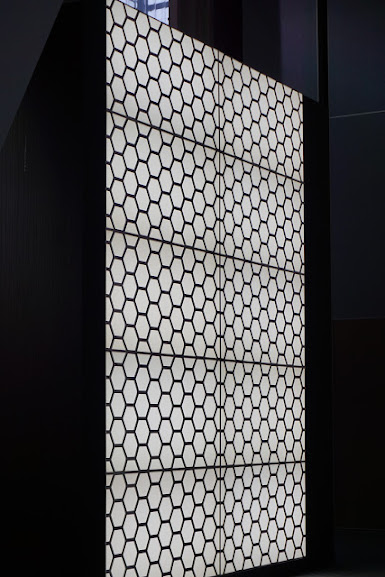January 2010 is hopeful for the future while celebrating the past with a look at the history of interior design!

 Edith Wharton and The Mount
Edith Wharton and The Mount
-the home she built in Lenox, Massachusetts-1879

 My wish for 2010
My wish for 2010
look at the Big Picture
first...let's ring in the New Year with lingering images from the holidays







 complete with a SNOWSTORM of epic proportions...
complete with a SNOWSTORM of epic proportions...




 early morning at East Hampton, Long Island train station after the "Blizzard of 2009" -
early morning at East Hampton, Long Island train station after the "Blizzard of 2009" -
26 inches of snow in six hours - a 100-year record in Long Island




next...let's work on our interior design with some thoughts for the future

With the New Year still ringing in my ears I feel optimistic for the future. I may be a little naive since the turmoil that exists seems to swirl around me with uncertainty. The plethora of socio-economic problems facing our society seems daunting, especially when coupled with the unrest in the world today. These dark issues that loom over our heads make for an uncertain future, but I continue to be grateful for the simple luxury of living in harmony in my community and in my "nest". The warm sense of community pervades throughout my children's schools in such a way that I never thought could exist in a large urban sprawl. The sense of acceptance and tolerance for the varying cultures, talents and people are part of what makes New York City a great place to live. I feel at home here, while some may find it too overwhelming to even visit. I am continually impressed with the pockets of little communities that reside within this metropolis. This City is such a great example to the rest of the world on how to live together with people of diversity, even celebrating differences.
Looking back on New York's relatively short history when compared to other cities in the world, it is evident that what lies at the core of this City's make up is a sense of determination to make this City work. I recently read about the great governor of New York from 1811, Dewitt Clinton, and how his forward thinking during a stressful time for New York helped to shape our country in a momentous manner. Dewitt Clinton's "grid system" for New York revolutionized the plan for how this city would eventually contain millions of residents. In addition, his construction of the "Big Ditch" (the Erie Canal) connected the waterways from the Midwest to the New York area and molded New York City going forward into American history as a focal point of our country. This resilience and pioneer thinking still exists in New York, and makes me think if our ancestors were able to dig deep in times of distress, we can certainly do the same in 2010.
On the other hand, the homogeneous nature of a small town can be welcoming in other ways. The day I moved into my home in East Hampton eleven years ago, three neighbors miraculously appeared with pies and cookies and warm smiles. Since becoming a year-round weekender in the sleepy enclave of the Springs in East Hampton, I have come to appreciate the old fashion values that make up this community. When I look around at the empty storefronts in Eastern Long Island, it seems that more and more the only shop owners that can afford the prices for retail space are large corporations. That makes me sad for this town that has always put a high premium on history while valuing a small town community. In addition, the recent onslaught of newspapers stories covering disputes between neighbors in the Hamptons makes me feel that these residents are missing the whole point of residing in a small community. Who really cares if your neighbor's hedges impede a sliver of your view, because the emotional unrest from fighting with them ruins the view for good.
My wish for 2010 is for everyone to look at the BIG PICTURE more often, because if you can find peace and harmony in your own home and community then maybe that concept will follow throughout life. My husband jokes that I bring every subject back to interior design. This may be true, but even the word "interior design" seems to now hold some deeper meaning as I contemplate the year 2010. How about for this month we concentrate on designing our homes but rather than with the materialistic elements that make up a home, with the important linings that make up a home and include us as part of our community.
After spending the holiday season with a parade of family members visiting, eating, singing, laughing, bickering and all the other ways in which family members spread throughout our home, I am happy to see them go, but realize the value in having had them here- the good, bad and even the ugly. Quite frankly my home has no value sitting empty and untouched because there are no shared memories, no history.  The Decoration of Houses
The Decoration of Houses
 The Decoration of Houses
The Decoration of Houses
written in 1898 by Edith Wharton & Ogden Codman, Jr.
This brings me back to my January topic of the history of interior design. Rather than a litany of Who's Who of interior design (since the list is quite long), for January I highlight an important, yet unlikely influence to the industry of interior design in the United States. I have dedicated this month's feature to Edith Wharton. This renaissance woman left her literary mark in a big way, and is almost always remembered for her Pulitzer Prize winning contributions in the "The Age of Innocence" (by the way, she was the first woman to win a Pulitzer for fiction writing) as well as the many other novels she published in the early 1900s.
Edith's rich novels leave us great stories, but even greater glimpses and historical studies of the patrician culture in America during the turn of the century. Unless you are in the design business, however, you may not be aware of Edith's important contributions to the world of interior design. With the privilege of living in the Gilded Age and coming from a wealthy family, Edith had the luxury of living a cultured life in the United States and Europe. Because of these experiences, and her undying talent for the aesthetics, and finally, her even greater gift for storytelling, Edith wrote a virtual interior design manual to the United States in her first published book, The Decoration of Houses. She was an unknown writer at the time, and well before her later literary accomplishments she paired with architect Ogden Codman to scour many important homes in Europe and English and bring a detailed description and explanation of how to properly decorate a home. Edith railed against the cluttered and dark rooms that were typical during the Victorian era, and instead looked to classical European notions of proportion and symmetry while utilizing the elements of architecture when considering interiors. Edith's approach helped to define and educate our society during a time of prosperity, but not necessarily a time of good taste in America. Her lifelong fascination with and love for interior design were evident.
After writing the book, Edith built "The Mount", a beautiful home in Lenox, Massachusetts. Unfortunately, the state of The Mount has been fraught with modern day financial woes. I first visited The Mount in 1992 to attend one of a few show houses instituted to preserve and raise money for the foundation. Since that time, the gardens and greenhouse have been preserved. One of my favorite current designers, Bunny Williams, renovated a few rooms at The Mount in a recent refurbishing. It is obvious that Bunny thought deeply about Edith's styles when putting forth her own versions. Edith's love for design stayed with her, and later in life, Edith studied horticulture and published another design book, Italian Villas and Gardens, which showcases her love for Italy. Although Edith left the United States and lived her aging years in Europe, she left a lasting floor plan for interior design concepts that the industry continues to tap into today.
an appreciation for the past with a thanks and tribute to Edith Wharton for her interior design and gardening contributions

 above - two illustrations by Maxfield Parish featured in Edith's book brings her visions to life.
above - two illustrations by Maxfield Parish featured in Edith's book brings her visions to life.
"The traveller returning from Italy, with his eyes and imagination full of the ineffable Italian garden-magic, knows vaguely that enchantment exists: that he has been under its spell, and that it is more potent, more enduring, more intoxicating to every sense than the most elaborate and glowing effects of the modern horticulture.”Edith Wharton

Edith's love for gardens and Italy prompted this book in 1921- The Mount and the foxgloves flowers in the newly restored gardens
 Excepts from the New York Society Library regarding Edith's study on gardens -
Excepts from the New York Society Library regarding Edith's study on gardens -
"One of Edith Wharton's earliest memories was playing as a little girl in the Roman Forum. Soon after the Civil War her parents temporarily abandoned the upper-class landscape of Fifth Avenue and Rhinebeck, New York for the continent. In her autobiography Wharton wrote of wandering "on the springy turf of great Roman villas." Italy was now "ineradicably in one's blood." In 1902 the Century magazine asked Wharton to write a series of articles about Italian villas and their gardens. She had already mined the Italian scene in her 1902 novel, The Valley of Decision. Wharton visited some fifty villas around Rome, Florence, Siena, Genoa, in Lombardy and the Veneto. Many were closed to the public.  Excepts from the New York Society Library regarding Edith's study on gardens -
Excepts from the New York Society Library regarding Edith's study on gardens - At first I found it difficult to get helpful information from Italians,"she later wrote. "A 'garden' to them still meant a humpy lawn with oval beds of cannas encircling a banana-plant, and I wasted a good deal of time before learning that I must ask for ‘giardini tagliati.'" In Florence, the writer Vernon Lee organized a "prodigious number"of expeditions for her friends. In the garden of a villa near Siena, Percy Lubbock sighted Wharton. "There was Edith, bright and alert,"he wrote, "brisk on her feet after a winged glance." Wharton's winged glance went deep. The book's guiding theme is that the garden "must be studied in relation to the house and both in relation to the landscape." At the Villa d'Este she wrote that "the solemn depths of green reverberate with the tumult of innumerable streams." Wharton returned to New York in 1903. She began work on The House of Mirth, the novel that would establish her reputation".
"Decidedly, I’m a better landscape gardener than novelist",
Edith Wharton

The Mount was built during the turn of the twentieth century just before Edith wrote her infamous "House of Mirth." The home showcases her talent for design. The lighter, classical colors and use of symmetrical architecture and delicate, tall tapered-leg furniture are reminscent of Robert Adam's Neoclassical designs in the 1700s and are taken from English palladian architecture. (as can be seen above in this paneled room and wallpaper)
 the gardens and greenhouse restored since 2002
the gardens and greenhouse restored since 2002

The fully restored library at the Mount

before and after shots of The Mount dining room in a fairly recent refurbishment
Thank You Edith!
Edith's book on decoration brought a resurgence of popularity for the Robert Adam's style of architecture and furniture from the 1700s. Note the "Adams style" ceiling with the lighter hues of blue and greens and a classical, lighter feeling toward furniture and decorations as opposed to the heavier, darker colors that were popular during the Victorian era when Edith was writing. 

 The popular furniture of cabinet and furniture maker George Heppelwhite with his shield back chairs were produced under the Adams style.
The popular furniture of cabinet and furniture maker George Heppelwhite with his shield back chairs were produced under the Adams style. Please stop by in
Please stop by in


 The popular furniture of cabinet and furniture maker George Heppelwhite with his shield back chairs were produced under the Adams style.
The popular furniture of cabinet and furniture maker George Heppelwhite with his shield back chairs were produced under the Adams style. Please stop by in
Please stop by in
February
to thank the talented professionals that make up
this industry, from the painters to the cabinet makers.
These craftmen are what have made interior design the rich industry it is today





